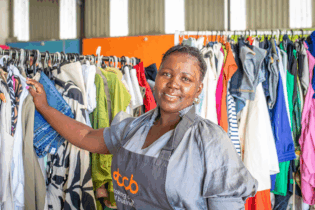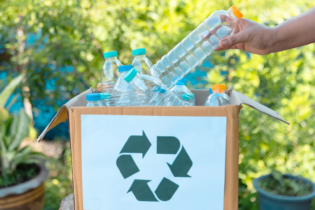Imagine the benefits of children being able to do their homework by decent light and families enjoying dinner together after sunset.
The solar project is one of 15 renewable energy and energy-efficiency demonstration sites co-ordinated by Project 90 by 2030 across South Africa. The aim is to show the technology available to ordinary households to relieve them of the need to rely on burning fossil fuels for electricity, or candles and paraffin lamps. “South Africans need to change the way they live by 90% by the year 2030,” said Olivia Andrews, operations co-ordinator of Project 90 by 2030. The name comes from Guardian writer George Monbiot’s thesis in his book Heat that industrialised nations need to reduce their carbon emissions by 90% by the year 2030 if the catastrophic impacts of climate change are to be avoided. “South Africa is a developing country, but it has disproportionately high CO2 emissions,” said Andrews. “We challenge South Africans to make a fundamental lifestyle change. This includes introducing energy efficiency to all aspects of everyday life and working for energy choices that do not rely on fossil fuels.” Environmental leadershipThe overall aim of the project is to develop environmental leadership that can change carbon-intensive behaviour. It does this through ongoing research as well as by providing accessible educational tools and working directly with climate control decision-makers. To help middle-class folk with access to computers to do their bit to combat climate change, the project’s website is packed with toolkits such as an online carbon calculator to quantify one’s carbon footprint. There is an audit tool for offices as well as personalised action plans and an interactive household tool. Educational booklets for students provide advice and workshops on carbon reduction.
The project was launched in July 2007 by the Goedgedacht Trust, a national programme that aims to lift rural children out of poverty and teaches sustainable living methods. Many of its theories have been put to the test at the Goedgedacht Farm near Malmesbury in the Western Cape, which has set its own target of becoming carbon neutral by 2012.
The farm is working with fog harvesting, wind energy, manufacturing earth bricks and there are community projects to make “wonder bags” in which flowers are grown. A biodigester provides gas for cooking and solar panels are used to provide electricity for hot water. The 15 demonstration sites in other parts of South Africa showcase a range of technologies and members of the public can visit them. They also created job opportunities and provided training in renewable energy, Andrews said. In Cape Town, for example, three social welfare centres of the Catholic Welfare and Development non-government organisation have been provided with solar water heating, cooking and lighting installations. The Johannesburg Zoo has the country’s first “zoo poo” biogas installation. Carbon footprint reduction clubs have been set up in 30 state and private schools: 10 in the Western Cape, 10 in Gauteng and 10 in KwaZulu-Natal. They aim to show the youth that climate change was everybody’s problem, Andrews said. The Greening the Future judges commended the project for its “vision of future possibilities” and its proactive role in lobbying for change. “Through its demonstration sites and other innovative models, it is helping to elevate low-carbon lifestyles to becoming desirable,” the judges said.







